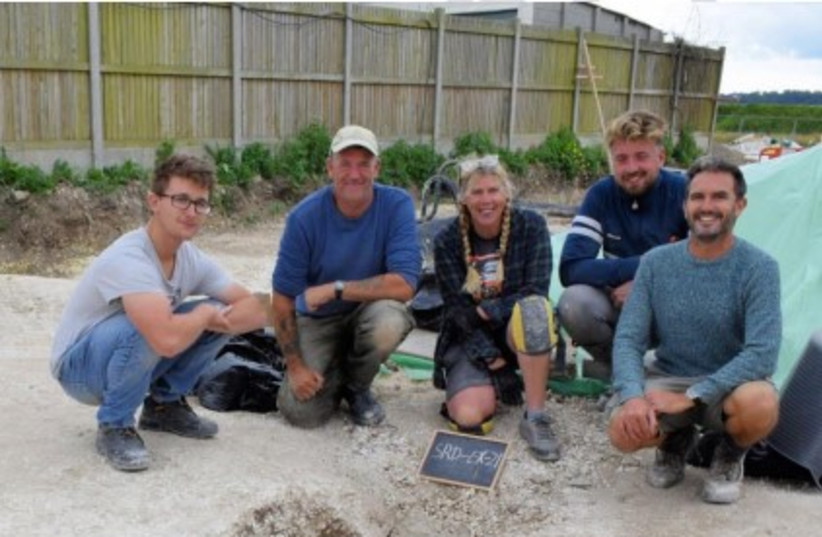Ancient warrior found buried with his steed and his dog
The burial site was used in the early Bronze Age and the Jutes took it over 2,500 years later.
By JERUSALEM POST STAFF SEPTEMBER 9, 2021

Early Anglo-Saxon horse and dog burial (photo credit: Peter Knowles/KAP)
An ancient burial site dating back to 2000 BCE was found in Kent last week.
The
burial site, which was discovered by Kent Archaeological Projects
(KAP), is 1.7 meters deep and about 3.5 m. wide and contained bodies
including a 12-year-old and a woman buried in smaller ring ditches.
After the fall of the Roman Empire
2,500 years later, the Jutes arrived from Denmark during the fourth
century and invaded parts of southern England including Kent. The
invasion was described by a known Anglo-Saxon cleric from Northumberland
named Bede.
The arrival of the Jutes makes up part of the mythology of England
founding, led by twin brothers Horsa and Hengist. The names point to the
fact that the Jutes revered horses, with Horsa meaning Horse, and
Hengist meaning stallion.
After
the invasion, the Jutes found the burial site in Kent and chose to
continue using the cemetery for their own dead. The KAP dig is
excavating the contents of the cemetery.

Archaeologists
left to right: Joseph Knowles, Steve Tomlinson Teresa Peters, Joe
Cantwell, Pete Knowles (credit: Peter Knowles/KAP)
Among
the findings were many high-status warrior burials that included the
warriors' spears, swords, shields and knives, while the women's graves
also included keys, brooches, a garnet pendant set in gold, glass bead
necklaces and a glass vessel.
Aside
from the people and their possessions, the dig also revealed the
skeletons of a horse and a wolf-sized dog. Adjacent to the animals was a
large warrior grave containing a large skeleton with a sword, spear,
two knives and a shield. Additionally, a bronze bucket adorned with
horse motifs was buried at the warrior's feet and was probably used for
the horse to drink from.
The sword was "highly decorated and had semi-precious stones in the hilt," director of KAP Tim Allen told the Express. "This was quite clearly a high-status burial."

Warrior grave, with the following artefacts, clockwise from top: shield
boss, spear, ring sword with gold & glass garnet, annular brooch,
brooch/pins, knife, bronze and wood bucket with handle and horse motifs.
(credit: Peter Knowles/KAP)
The archaeologists believe that the warrior died in battle because
his skull was smashed in, and the shield was covering his head where his
face would have been.
"I've
been an archaeologist in Kent for 36 years, and this is the most
important find I personally have ever made," Allen told KentOnline.
"The Jutes were the first English-speaking people: they spoke Old English, Anglo-Saxon he said. "This is the origin of England, right here."
Please Recommend this page and follow us at:

No comments:
Post a Comment
Stick to the subject, NO religion, or Party politics